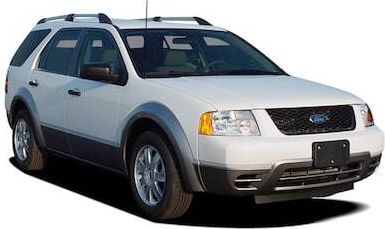When faced with the myriad options available on the market, it might not be easy to select the right tires. You want to look for tires that increase the vehicle's performance, safety, and fuel efficiency.
When it’s time for a replacement, you must understand your needs and options. Many drivers overlook key factors that could significantly improve their driving experience. Here, we will demystify the process and ensure you’re making an informed decision.

Understanding Tire Specifications
Before you select new tires, comprehend the specifications, including width, aspect ratio, and diameter, that define their performance. Each tire is labeled with a series of numbers and letters, indicating its size and load-carrying capacity. The first number denotes the tire width in millimeters, followed by the aspect ratio, which measures the sidewall height as a percentage of the width. To maintain your vehicle’s safety, you should know when to replace tires — ideally, they should be replaced every 6 years or when tread depth falls below 2/32 of an inch. A proper understanding of these specifications equips you to choose tires that complement your driving habits, whether you frequently drive in wet weather or prefer off-road adventures.
Types of Tires Available
The type of tire you select can greatly influence your vehicle's performance and safety. All-season tires are versatile and ideal for year-round driving, providing decent traction in various weather conditions. Summer tires, on the other hand, excel in warm, dry conditions but may struggle in cold or snowy weather. If you live in an area prone to severe winter conditions, investing in winter tires is advisable, as they offer specialized tread patterns and compounds designed to improve grip on snow and ice.
Consider performance tires if you own a sports car and prioritize handling and speed over all-weather capability. Understanding the types of tires available ensures you choose a set that best fits your driving style, climate, and vehicle requirements. When you align the right tires with your needs, you can enhance your vehicle's handling and improve overall performance.
Evaluating Tire Brands and Reviews
The market is filled with various tire brands, each claiming superior quality, longevity, and performance. Evaluating these claims through user reviews and expert recommendations makes an informed decision. Popular brands often have a solid reputation among drivers and usually offer a warranty, providing an extra layer of assurance regarding tire quality. However, mainstream brands typically have a higher price point, which may deter budget-conscious consumers.
Prioritize safety ratings and customer feedback when assessing tire options. Perform research using online resources that summarize tire tests and reviews, highlighting strengths and weaknesses across different conditions. Local tire retailers may also offer insights based on customer experiences. Balancing cost, performance, and feedback will enable you to select the best tires tailored to your driving needs.
The Installation and Maintenance of New Tires
Professional installation ensures that new tires are mounted correctly and balanced properly, preventing uneven wear and enhancing performance. It is advisable to have the alignment checked, as misalignment can lead to premature tire wear. Regular maintenance, including rotating your tires and checking the pressure, will extend their lifespan significantly. Recommendations suggest rotating your tires every 5,000 to 7,500 miles for even wear.
Neglecting the health of your tires can put you at risk of hydroplaning or blowouts, especially with a tire set nearing the end of its life. Always examine the tread depth using the penny test: insert a penny into the tread grooves with Abraham Lincoln's head down; if you can see his entire head, it's time to replace your tires. Implementing these maintenance practices will ensure that your new tires perform optimally for as long as possible.

Finding the right tires is a necessity for safety, performance, and comfort. Understanding the specifications, types, and brands, along with proper installation and maintenance, provides a solid foundation for making your selection. Take the time to research and choose wisely, and you can enhance your driving experience and ensure the safety of your vehicle on the road.




